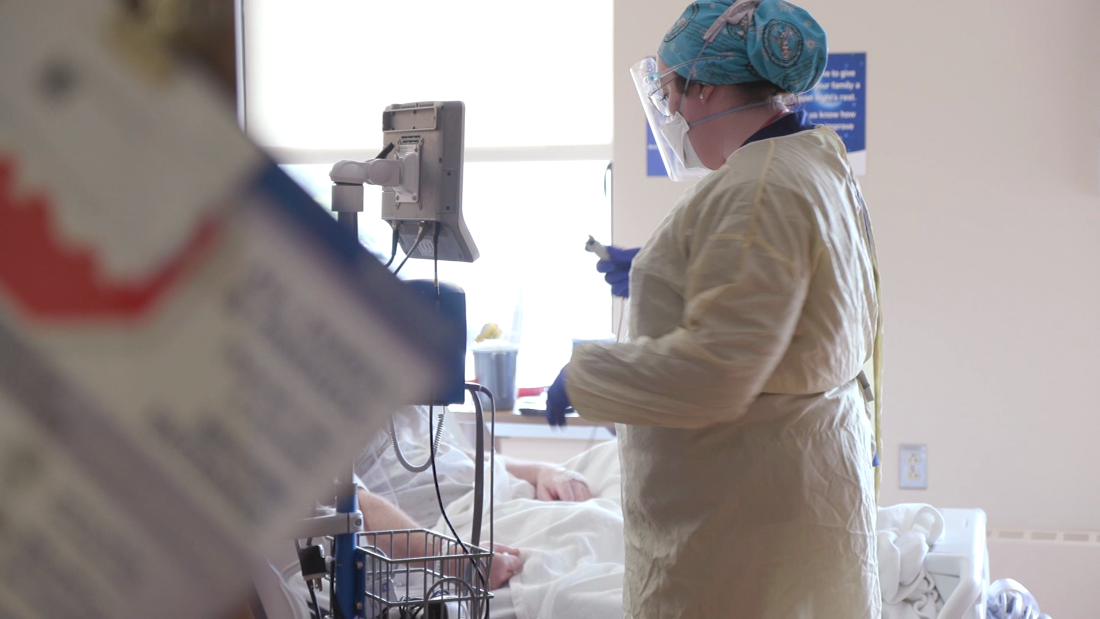Opinion: Delta variant poses a threat to our return to ‘normal’
According to a White House press briefing, the SARS-CoV-2 Delta variant now accounts for over 6% of sequenced cases in the US. The question is now how to contain it. Given that this variant seems to have increased transmissibility and that vaccines have relatively poor effectiveness after one dose, but strong effectiveness after two doses, it poses special challenges and I propose some mid-course adjustments to address them.
First, national policy goals should no longer focus on the percentage of people who have received at least one vaccination shot, but rather the percentage of people who are fully vaccinated. This may seem like a subtle difference but it is key when evaluating the level of immunity against the Delta variant. Therefore, President Biden’s national goal of 70% of adults receiving at least one vaccine dose by July 4 should be restated as a percentage of persons to be fully vaccinated by that date. Ideally 70% of adults would be fully vaccinated by July 4 but that is a very heavy lift from the current 53% of adults now fully vaccinated. Perhaps 60% of adults fully vaccinated by July 4 could be a feasible interim goal.
Second, the CDC’s guidance for fully vaccinated people regarding mask usage and safety precautions focuses on “fully vaccinated” vs “unvaccinated” persons. (You likely remember the popular infographic from the CDC that illustrates safe practices for fully vaccinated and unvaccinated people.) This tends to leave the role of partially vaccinated persons a bit uncertain. Given that the Delta variant makes the second vaccine dose an urgent matter, I propose that the CDC revise their infographic so that it compares “fully vaccinated” to “partially vaccinated and unvaccinated” persons. While the CDC does define “fully vaccinated” in some of the text on its website, it would be advisable to emphasize that partially vaccinated individuals should follow the same precautions as unvaccinated individuals.
Third, given the transmissibility of the Delta variant, there should be an expanded and urgent campaign to encourage mask use and social distancing among partially and unvaccinated persons, while encouraging vaccinations for those who have not yet received them. National Institutes of Health Director Dr. Francis Collins recently said that states with low vaccination rates are “sitting ducks” for the next Covid-19 outbreak. He is correct — and I would add that this is true not only for states but also for smaller geographic areas with low vaccination rates. The threat of spreading of the Delta variant warrants serious precautions to avoid more extreme lockdown measures in a few weeks.
Fourth, we should not characterize safety precautions like mask usage as practices from which we should liberate ourselves. Recently, the CDC said that fully vaccinated people are so well protected against Covid-19 that they no longer need to mask and social distance. But populations such as immunocompromised persons, children who cannot yet be vaccinated, and partially or unvaccinated people should still be wearing masks. And if Delta or other emergent variants start to pose greater challenges even for some fully vaccinated people, then perhaps they, too, may prudently temporarily wear masks.
As a public health tool, masks are still quite valuable. CDC-published mathematical modeling and other recently released studies have indicated that the use of masks and social distancing as a societal adjunct to vaccination is key for limiting potential future Covid-19 spikes. Therefore, we should not characterize such important tools as a weight to be lifted from us, but rather we should use them wisely as needed.
The US is making important progress in reducing cases, hospitalizations and deaths, thanks in large part to the outstanding vaccines we are fortunate to have in excess (especially when so many across the globe are in desperate need of vaccine supply), but we must keep up this work as there are still over 300 Covid-19-related deaths in the US a day, according to data from the CDC.
Further, unfortunately, vaccine access is disproportionately available across communities and the percentage of Black and Hispanic populations vaccinated is still less than that of other communities. For all of these reasons, we must urgently pivot our policy, programmatic and communication efforts to address the novel challenges now posed by the Covid-19 Delta variant before it becomes even more widespread. There is no time to lose.
![]()




